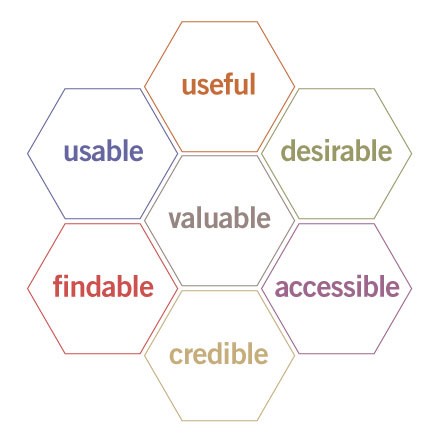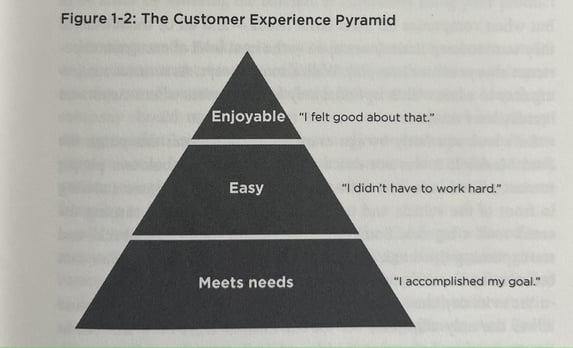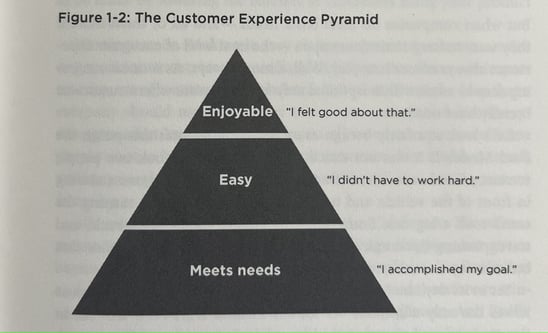1992%E5%B9%B4%E4%BB%A5%E9%99%8D%E3%80%81%E7%A7%81%E3%81%9F%E3%81%A1%E3%81%AF%E3%81%A9%E3%81%93%E3%81%BE%E3%81%A7%E9%80%B2%E6%AD%A9%E3%81%97%E3%81%9F%E3%81%8B%3F.png?width=1203&height=630&name=%E5%85%B1%E5%89%B5(co-creation)1992%E5%B9%B4%E4%BB%A5%E9%99%8D%E3%80%81%E7%A7%81%E3%81%9F%E3%81%A1%E3%81%AF%E3%81%A9%E3%81%93%E3%81%BE%E3%81%A7%E9%80%B2%E6%AD%A9%E3%81%97%E3%81%9F%E3%81%8B%3F.png)
私は 1992年に『収束的視点:1990年代のための製品開発リサーチ(Converging Perspectives: Product Development Research for the 1990's)』と題した論文を書き、それが「Design Management Journal」に掲載されました。当時、新製品の失敗率が80パーセント前後というかなり高い時期にあり、私は、この論文でデザインリサーチの現状を説明するよう求められました。そこで私は現状を説明する代わりに、1990年代以降に向けて、どのようにデザインに取り組めるかを提案することにしました。それはたんなる予測ではなく、将来に向けた期待を述べることでした。私がそうした期待を述べてから、これまでに何か起こったか、振り返ってみる時がやってきました。
役立つ(Useful)、使える(Usable)、望ましい(Desirable)
先の論文における重要なポイントは、いかなる製品も「役立つ」「使用できる」「望ましい」を同時に兼ね備えていなければならない、ということでした。「役立つ製品とは、消費者が必要としていて、使うことになる製品。使える製品とは、 消費者がすぐに使用できるか、またはすぐに使い方を理解できる製品。そして、望ましい製品とは消費者が使いたくなる製品である」(1992年)
「役立つ」「使える」「望ましい」というモットーは、これまでデザインに関わる多くの人々に取り上げられてきました。そして今日、このモットーは、人間中心の製品とサービスをデザインする上で 第一の目的としてしばしば使用されています。
このモットーが特にユーザーエクスペリエンス(UX)デザイナーの中で良く知られているのは、 ピーター・モービル(Peter Morville)が2004年にこのモットーを拡大(図1)したためです。モービルの「ユーザーエクスペリエンスのハニカム(蜂の巣)」は、成功する製品とサービスの中核的な特性に、「みつけられる(Findable)」、「信頼できる(Credible」)、「アクセスできる(Accessible)」という目的を追加しています。

図 1: ユーザーエクスペリエンスのハニカム構造 (http://semanticstudios.com/user_experience_design/)
より最近では、このモデルはビジネスの世界でも使用されるようになりました。その代表例が、「カスタマーエクスペリエンス・ピラミッド(2012年)」で、Forrester Researchが発行した、Harley Manningと Kerry Bodineの共著『Outside In: The Power of Putting Customers at the Center of Your Business(顧客をあなたのビジネスの中心に置くことの強み)』という本で紹介されています。そこでは、主要な特性は同じですが、異なる用語が使われています。「役立つ」を「ニーズを満たしている(Meets needs)」に、「使える」を 「簡単(Easy)」に、「望ましい」を「楽しめる(Enjoyable)」としているのです。

図 2: カスタマーエクスペリエンス・ピラミッド(http://outsidein.forrester.com/resources.html)
私たちは今、「役立つ」「使える」「望ましい」を同時に兼ね備えた製品やサービスをデザインしているでしょうか? 答えは「ノー」です。私たちは、「使用できること(Usability)」と「望ましさ(Desirability)」について、どのように対処すべきかわかっています。けれども私たちはいまも、どうすれば将来の製品を「役立つ」ものにできるか、というレベルにとどまっているのです。
では、1992年以降、他に何か変わったのでしょうか? 変化のために何を取り組んできたでしょうか?
デザインリサーチはデザインプロセス全体を通して行われている
「私は新しいアプローチを提案する。つまり、消費者(ユーザー)のニーズの発見からそれらのニーズに対応した製品の開発まで、そして最終的には、市場および究極的には消費者とエンドユーザーへ望ましい製品を提供するための開発プロセス全体にリサーチを取り入れたアプローチだ」(1992年)
今日、デザインリサーチはデザインプロセス全体に取り入れられています。ご存じの通り、何をデザインするかを決める際には「生成的な(Generative)デザインリサーチ」を初期段階で取り入れます。また、デザインプロセスの後半には「評価的な(Evaluative)デザインリサーチ」を取り入れて、どのようにデザインすれば ベストかを判断しています。
収束的視点がデザインリサーチに取り入れられている
「収束的視点(Converging perspectives)とは、製品開発の課題に取り組むために2つ以上の調査方法を使用することを指す」(1992年)
今日、私たちは、製品とサービスのデザイン開発のために、多くの異なった方法を使用しています。実際、非常に多くのデザインリサーチ手法が多数の書籍で紹介されていますし、そこでは、各手法がわかりやすくリスト化され、説明されています。今日の課題は、デザインリサーチを取り入れるかどうかではなく、各デザインプロセスで「どの最適な方法を選ぶか」にシフトしたということです。
デザイナー以外の人がデザインプロセスに参加する
「参加の目的は、デザインプロセスに消費者を取り込み、関与させることである。それは、製品開発プロセスの中で、受け身の情報提供者から積極的な参加者へと、リサーチにおける消費者の役割を変えていく」(1992年)
今日、人々は「製品とサービス両方のデザインと開発」への積極的な参加者です。そこには「共創(Co-creation)」が定着しています。インターネットとソーシャルネットワークによって、人々は社会的な機会が拡大されただけでなく、以前には考えられもしなかった方法でつながっています。人々は、製品やサービスを購入する前に、それらを使用した他の消費者の体験を聞くことができます。人々は、自分用に製品やサービスをデザインすることさえできます。マーケティングと広告宣伝は参加型の発想を取り入れ、変化しています。そして、一般の人々も参加型デザインの活用方法を知っています。
デザイナーの新しい役割の誕生
「参加型デザインは、デザイナーに、デザインプロセスの「実現者(Enabler)」としての新しい役割を課している」(1992年)
他の多くの役割に加え、今日のデザイナーは「デザインプロセスのファシリテーター」としての役割を果たしています。彼らは、社会変革のカタリスト(触媒の働きをする人)に、共同的体験のファシリテーターに、そしてまた起業家精神にあふれた制作者になりつつあります。
私たちはここからどこに向かうのか?
私たちは1992年以降、大きな進歩を遂げてきました。すべてのステークホルダーと手を携えた共創(Co-creation)、そして、デザインと開発プロセス全体にわたる共創が今日の現実です。20年後はどのようになっているのでしょうか? おそらく私たちは、「使える」「望ましい」そして「役立つ」製品とサービスをデザインしているでしょう。
リズ・サンダース / MakeTools
http://www.maketools.com/
In 1992 I wrote a paper called Converging Perspectives: Product Development Research for the 1990's that appeared in the Design Management Journal. For the paper I was asked to describe the current state of design research in practice at a time when the rate of new product failures was very high, around 80%. Instead of describing the current situation, I decided to propose how we could approach design for the 1990's and beyond. It was not about making predictions, but expressing hopes for the future. It is time to look back now and see what has happened since then.
Useful, usable and desirable
The big idea introduced in the paper was that products must be simultaneously useful, usable, and desirable. "A useful product is one that consumers need and will use. A usable product is one they can either use immediately or learn to use readily. A desirable product is one they want to use." (1992)
The useful, usable, and desirable mantra has been picked up by many design practitioners. Today it is often used as the primary goal for the design of human-centered products and services. It is particularly well known by user experience (UX) designers because of Peter Morville's 2004 expansion (Figure 1). Morville's User Experience Honeycomb adds the goals of findable, credible, accessible, and valuable to the core attributes of successful products and services.

Figure 1: User Experience Honeycomb (http://semanticstudios.com/user_experience_design/)
More recently, the model has also found its way into the hands of the business community. A case in point is the Customer Experience Pyramid (2012) (Figure 2) that is presented in the book Outside In: The Power of Putting Customers at the Center of Your Business by Harley Manning and Kerry Bodine of Forrester Research. Here, the primary attributes remain the same but have new names. Useful has become "meets needs". Usable became "easy" and desirable became "enjoyable".

Figure 2: The Customer Experience Pyramid (http://outsidein.forrester.com/resources.html)
Are we now designing products and services that are simultaneously useful, usable and desirable? No. I believe that we do know how to address usability and desirability. But we are still working on how to ensure that future products and services will be useful.
So what else has changed since 1992? Have the other proposals for change been acted upon?
Design research takes place throughout the entire design process
"I propose a new approach ... that incorporates research into the entire development process from discovery of consumer/user needs, to development of products addressing those needs, and finally, to delivery of the desired product to the marketplace and ultimately to the consumer and end user." (1992)
Design research is being used throughout the design process today. We can see generative design research taking place in the early front-end in order to determine what to design. We can also see evaluative design research happening later in the process to determine how best to design it.
Converging perspectives are used in design research
"Converging perspectives refers to the use of two or more methods of investigation to approach any product development question." (1992)
Today we see many different methods of design research in use for the design and development of products and services. In fact, there are so many methods for design research that a number of books have been published that simply list and describe them. Today the question is not whether to use design research, but how to choose the methods that are most relevant at each point along the process.
Non-designers are participating in the design process
"The aim of participation is to include and involve consumers in the design process. It changes the role of the consumer in research from passive informant to active participant in the product development process." (1992)
People are active participants in the design and development of both products and services today. Participatory design (also referred to as "co-creation") is here to stay. Because of the internet and social networks, people are not only empowered but also connected in ways that were not even considered earlier. They can ask other consumers about their experiences with products and services before they buy them. They can even design their own products and services. Marketing and advertising have changed to adapt to the participatory mindsets that everyday people now hold and know how to make use of.
New roles for designers have emerged
"Participatory design puts the designer in a new role as the "enabler" of the design process." (1992)
In addition to many other roles, designers today are playing the role of enabler of the design process. They are becoming catalysts of social change, facilitators of collective experiences, and entrepreneurial makers as well.
Where do we go from here?
We have come a long way since 1992. Co-creation with all the stakeholders and across the entire design and development process is today a reality. What will it look like 20 years from now? Perhaps we will be designing products and services that usable, desirable and also useful.
Liz sanders / MakeTools
http://www.maketools.com/
.png?width=160&height=100&name=Top_logo%20(3).png)

1992%E5%B9%B4%E4%BB%A5%E9%99%8D%E3%80%81%E7%A7%81%E3%81%9F%E3%81%A1%E3%81%AF%E3%81%A9%E3%81%93%E3%81%BE%E3%81%A7%E9%80%B2%E6%AD%A9%E3%81%97%E3%81%9F%E3%81%8B%3F.png?width=1203&height=630&name=%E5%85%B1%E5%89%B5(co-creation)1992%E5%B9%B4%E4%BB%A5%E9%99%8D%E3%80%81%E7%A7%81%E3%81%9F%E3%81%A1%E3%81%AF%E3%81%A9%E3%81%93%E3%81%BE%E3%81%A7%E9%80%B2%E6%AD%A9%E3%81%97%E3%81%9F%E3%81%8B%3F.png)







